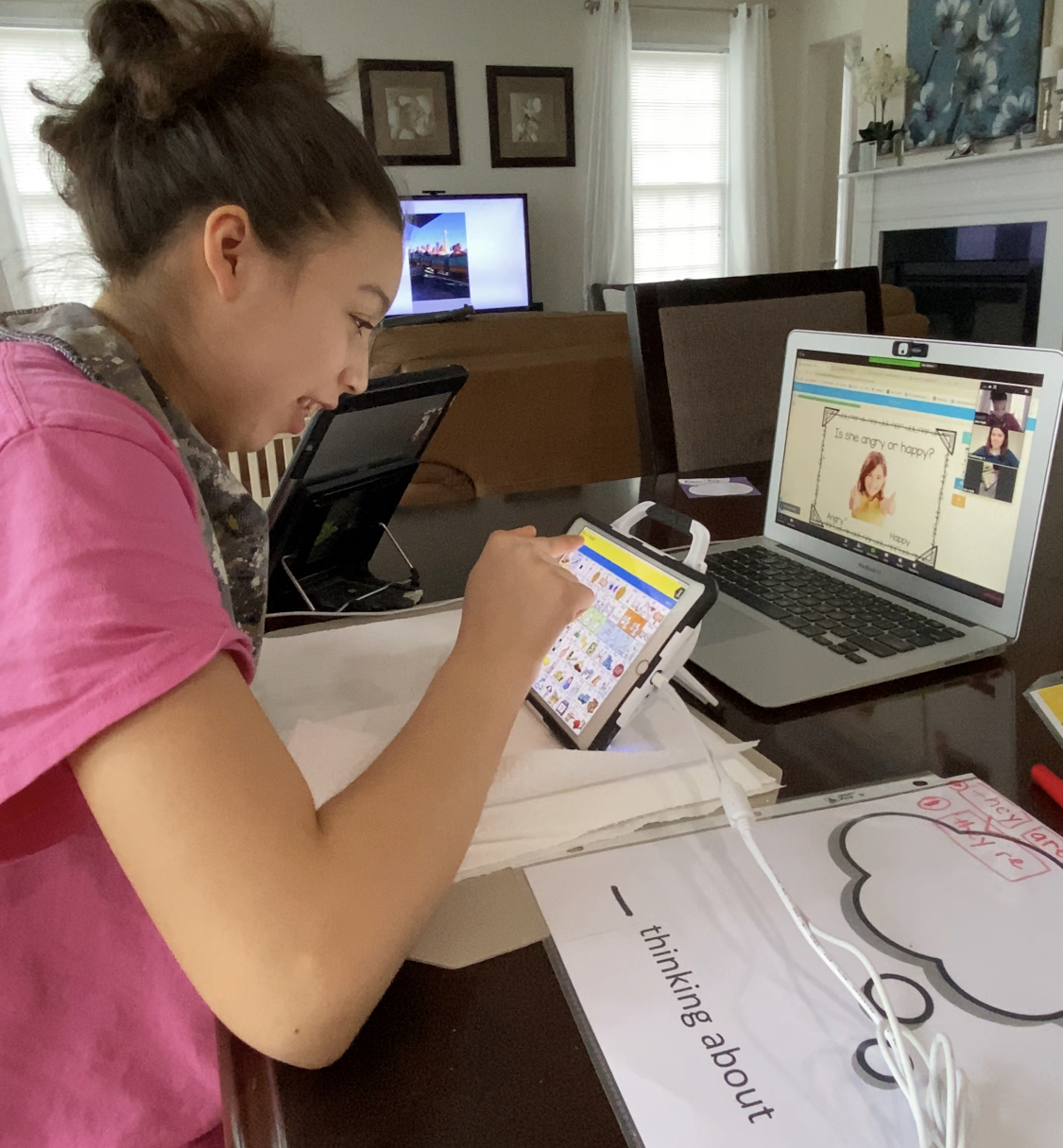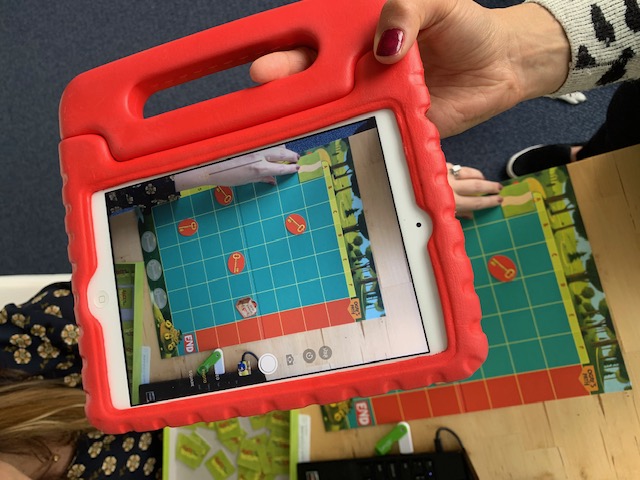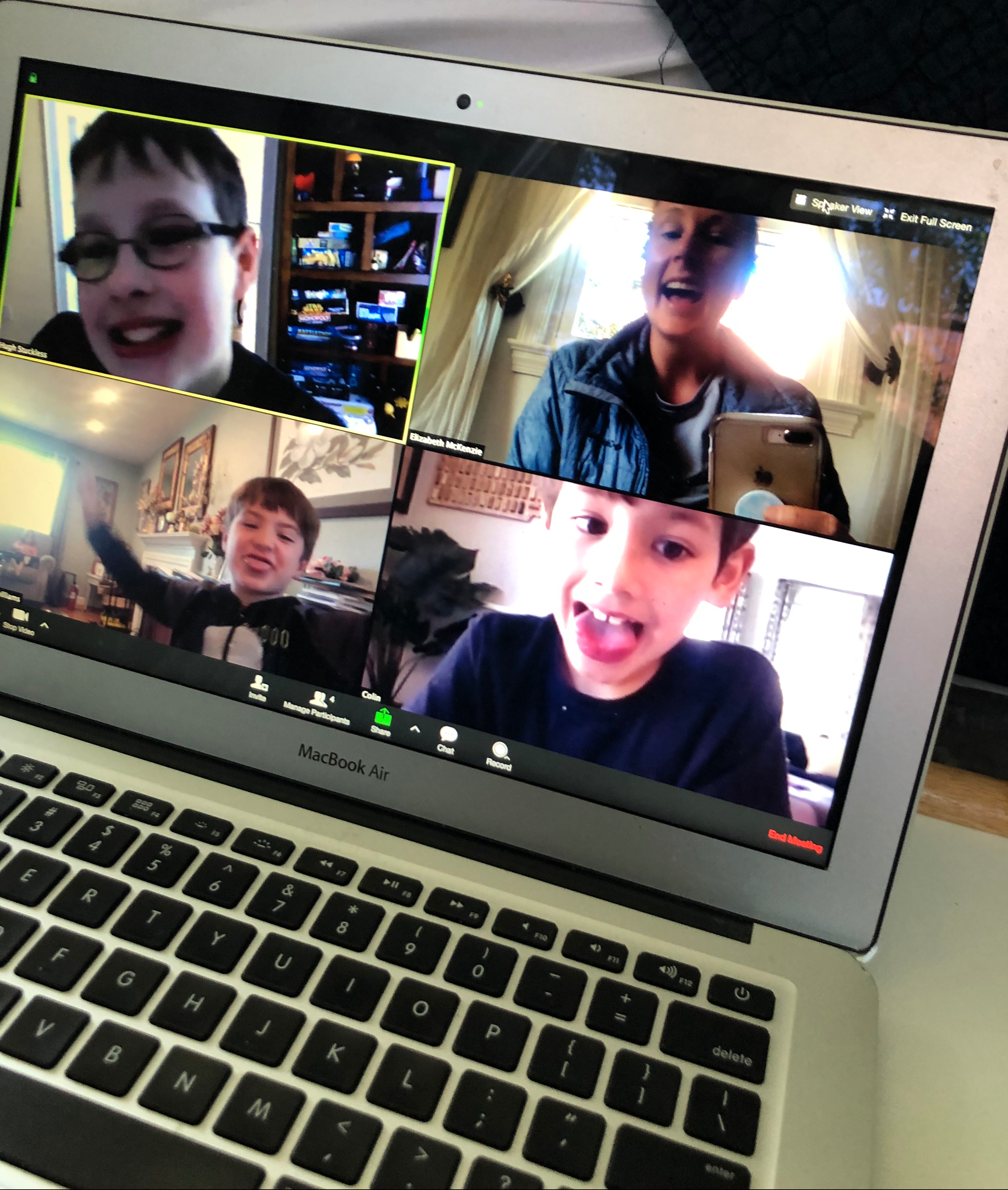
We’ve been delivering virtufal therapy services since March, and as our therapists have gotten more comfortable with the technology, the sessions have been getting better and better! When we first went virtual, we were unsure how therapy with toddlers and preschoolers would translate to Zoom. While it does take some creativity and patience, we’ve found that we are still able to deliver effective and fun therapy sessions virtually. Here are what our sessions can offer:
Expert Ears and Eyes
A trained clinician is better able to make observations surrounding your child’s development.
Therapy Activities Disguised as Play
Believe it or not, we are finding that most of our little ones WILL in fact do a lot over the screen. We use a combination of interactive and appealing graphics, real toys and our own personalities to engage your child. Our therapists have gotten quite creative with this- from building forts to playing hide and seek to even having a costume party!
Parent Coaching
Even if your child isn’t easily engaged via Zoom, our clinicians are able to teach you strategies and tips so that you can implement the treatment yourself. We collaborate with you to find tools that are the most effective for your child, and the best fit for your family’s routine. We can also help you problem-solve or pivot if something is not working well.
Fresh Ideas
With so much time at home, it is easily to get stuck in a rut. Our therapists can take a peek at the toys and materials you already have, and give you new ideas of how to use them in a way that will support your child’s goal areas.
Progress Monitoring
Even a bi-weekly or monthly check-in is a great way for our team to keep tabs on your child’s development to make sure we aren’t losing ground while stuck at home.
A Space for YOU
Life is so upside-down right now. Having a chunk of time carved out each week for you to ask questions, talk through frustrations, make observations and share success stories can be invaluable. We want you to feel supported and confident in your ability to work on this stuff at home. Many of our families use their weekly session as an anchor for the week. We are in this together!
Amanda Wittman, one of the therapists on our early intervention team, suggests these helpful tips for smooth zooming!
HELPFUL TIPS TO GET THE MOST OUT OF YOUR VIRTUAL SESSIONS
-Don’t worry about your child being “on” for every minute of every session. It is just as valuable for the clinician to coach you through moments where attention is waning or your child is acting out, as it is to see your child playing “perfectly”.
-Consider putting the iPad or computer up high with the screen angled down towards you and your child to limit visual distractions. Also-this prevents the child from turning the computer off, or ending the session by accidentally pushing random buttons!
-If you are open to direct parent-coaching, consider using headphones so that the clinician isn’t seen or heard-this really ups the child’s engagement, believe or not!
-If you are interested in having the child interact directly with the clinician, set up the child in a high chair or at a table so that they are moving and walking around less. This can help the child focus, but don’t worry about bringing them to the table or high chair until the session begins.
-Come with lots of questions! But, prepare to ask them towards the ends of the session. Little ones tend to have their best attention at the beginning of the session, so once their attention begins to peter out after 20 minutes or so, this can be a good time for the clinician and parent to talk directly without the child’s direct engagement. I use this time to ask the parent how they could take some of what we did in the session and practice it with other toys or during other times of the day throughout the week. Giving parents 2-3 things to practice really empowers them at the end of the session-it’s a nice way to wrap up our time together.
-Try tag-teaming with caregivers: if mom or dad has a meeting during your regular session time-that’s okay! Ask the other child’s parent or au pair or grandmother to come to the teletherapy session instead. It takes a village with our little ones, and coaching other caregivers can be very, very valuable!
Even though we are offering in-person therapy, many of our clients are electing to stay virtual because it is going well! If you think your family might benefit from teletherapy, give us a call! Our team is ready to help.

Elizabeth Clark McKenzie, MS, CCC-SLP






























